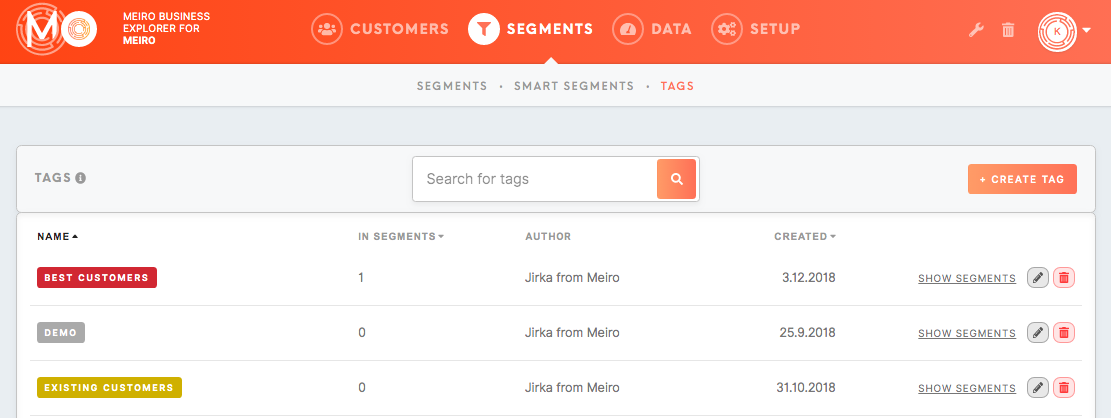Glossary: what is what in Meiro Business Explorer
| Attribute |
Attributes are characteristics of a customer (e.g. information about personal data, revenue spent and opened campaigns etc). Segments customers based on attributes. In customer profile is possible to see set of attributes available for each individual customer. A full list of available attributes across the customers can be found in the Data/ Attributes tab.
Learn more: Segment: attributes & conditions, parenthesis, exclusion.
|
| Condition |
A condition is a rule that specified an attribute in the segment or insights.
Learn more: Segment: attributes & conditions, parenthesis, exclusion
|
| Customer entity |
An entity is a single unit for which one can apply the rules of a segment. Can be a person, company.
|
| Data destination |
A data destination can be any tool that can store customer data (database, CSV file, advertising platform). A list of all available data destinations can be found in the Data/Sources/ Destination tab. |
| Data source |
A data source can be any tool that collects customer data (online shop, marketing tool etc.). A list of all identified data sources can be found in the Data/ Sources&Destinations tab.
|
|
Events
|
Events are actions a customer has performed (like transaction, page views, open applications) together will all additional information that is posible to get from this action (like transaction amoun, time of the page view, when and for how long application was opened). A list of all events collected for you can be found in the Data/ Events tab.
|
|
Labels
|
Labels are assigned to attributes. They help to manage attributes across Meiro interface (Customer Identifiers, Channel Engagement, and personal data protection settings, Customers tab). A full list of labeled attributes is shown in the Data/ Attributes tab.
Learn more: To learn how to use labels for across Meiro Business Explorer, please go to this article.
|
|
Segment
|
A segment is a personalised query that helps to filter customers by their attributes and additional conditions. Learn more: about segments from this articles. |
| Tag |
Learn more: about tags from this article. |






